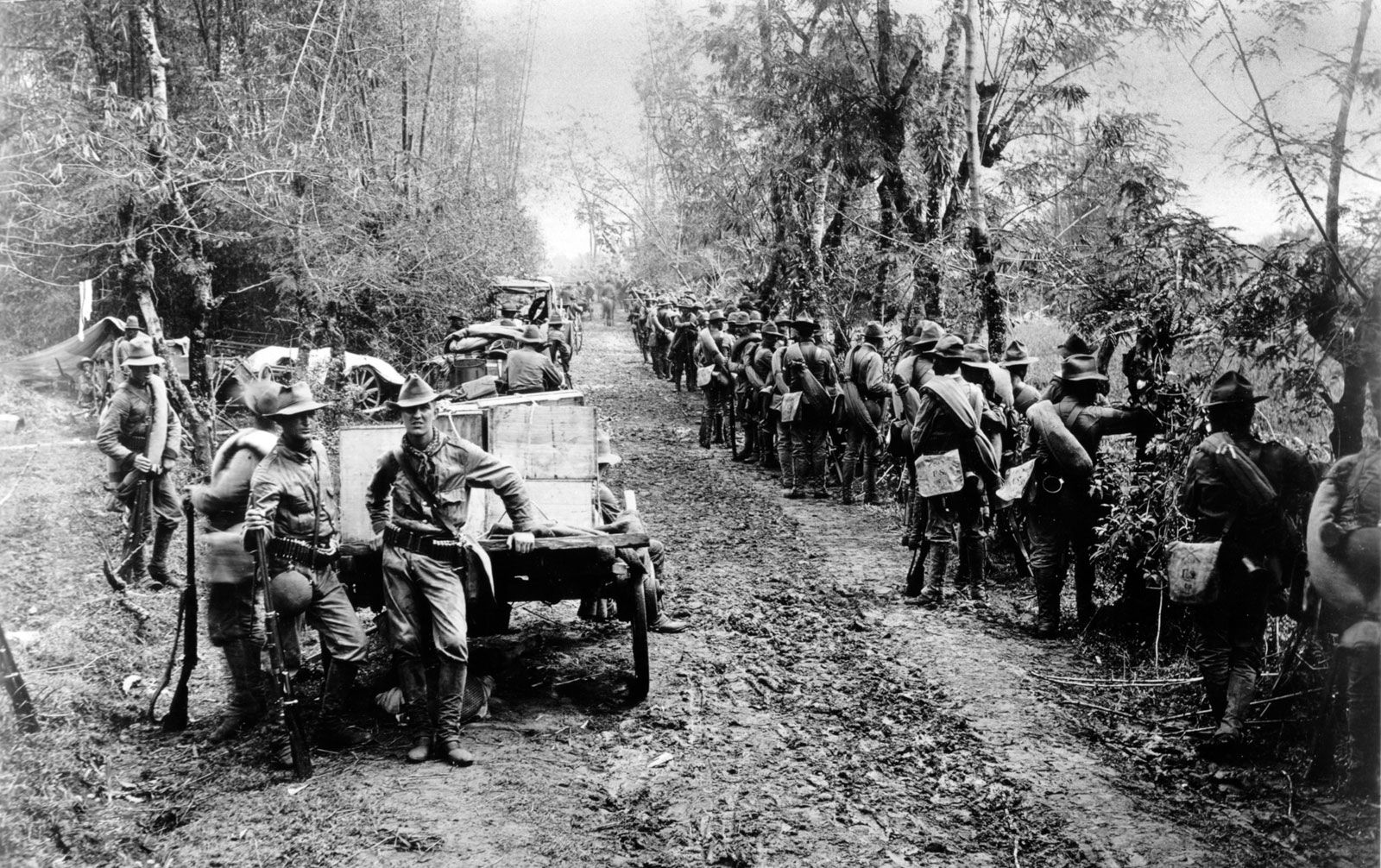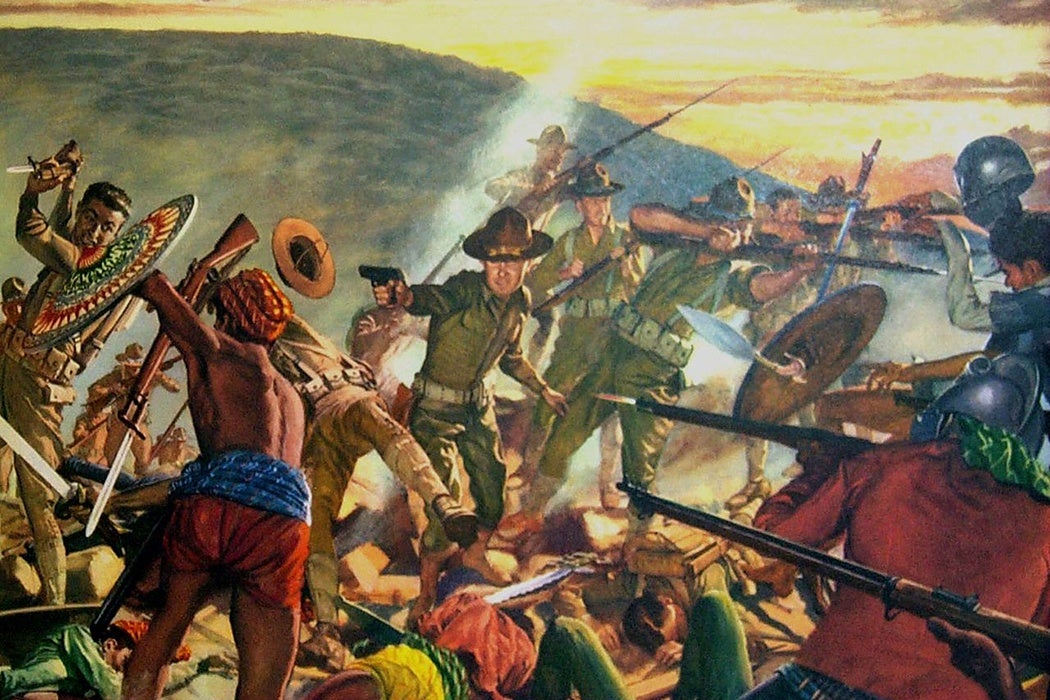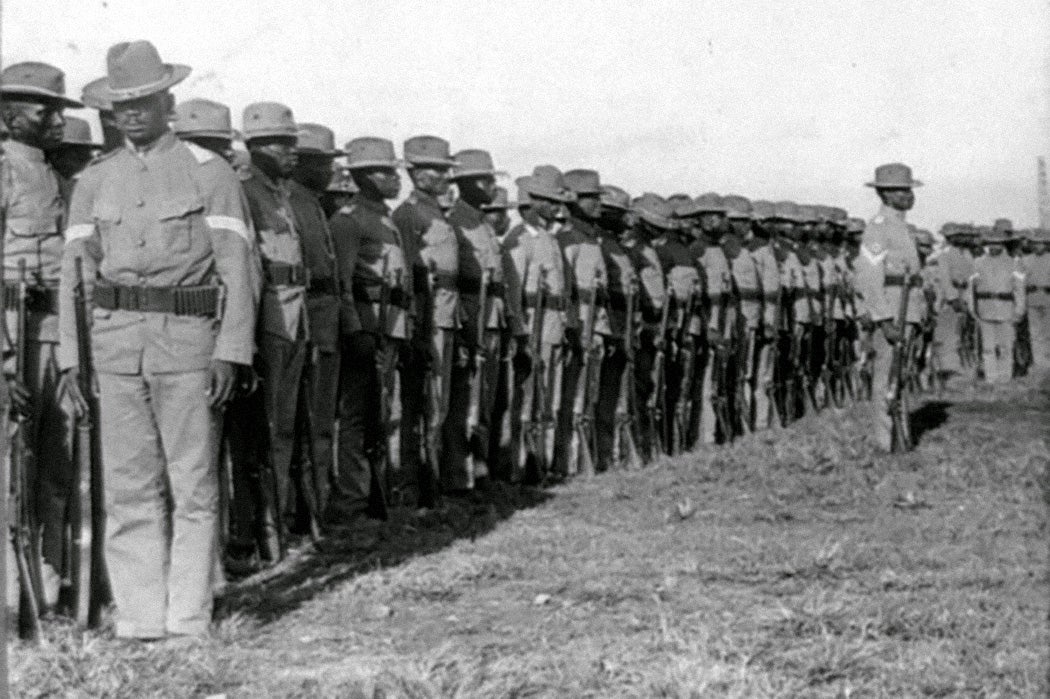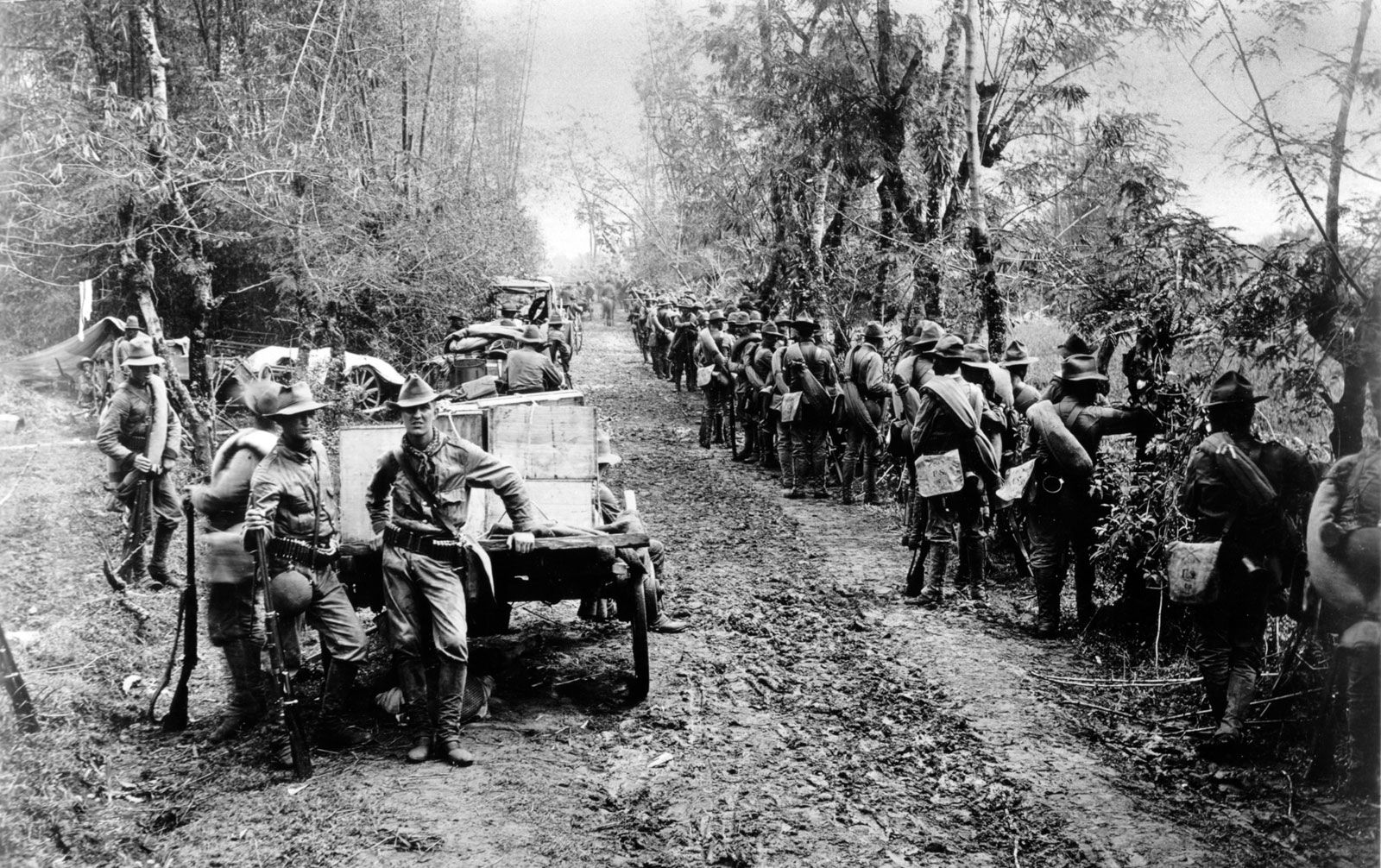In the twilight of the 19th century, a forgotten chapter of imperial conquest unfolded in the tropical archipelago of the Philippines. The Philippine-American War, a brutal conflict often overlooked in historical narratives, represents one of the most complex and devastating moments in the United States’ imperial expansion.

Credit: Britannica
The roots of this conflict trace back to the Spanish-American War of 1898. As Spain relinquished its colonial grip, the United States saw an opportunity to establish its global dominance. The Treaty of Paris in December 1898 transferred the Philippine Islands to American control, igniting the fierce resistance of Filipino nationalists who had been fighting for their independence.

Credit: JSTOR Daily
Led by Emilio Aguinaldo, the Filipino revolutionaries had already declared independence in January 1899. However, the United States refused to recognize their sovereignty, setting the stage for a conflict that would reshape the region’s political landscape. The first shots were fired on February 4, 1899, in Manila, marking the beginning of a brutal war that would last until 1902.

Credit: Wikimedia Commons
The conflict was marked by stark asymmetries. The American forces, equipped with superior weaponry like Gatling guns and repeating rifles, faced a Filipino resistance that initially fought conventional battles but quickly transitioned to guerrilla warfare. This shift in tactics reflected the Filipinos’ determination to resist foreign occupation, despite being significantly outgunned and outnumbered.
The human cost of this imperial ambition was staggering. Estimates suggest that between 200,000 and 250,000 Filipino civilians died, primarily from famine and disease. The American military employed brutal tactics, including concentration camps, scorched earth campaigns, and widespread civilian relocation. These strategies decimated local populations and communities, leaving deep psychological and social scars.

Credit: JSTOR Daily
Both sides committed atrocities. American soldiers frequently targeted civilians, with some units burning entire villages and executing prisoners. Correspondents and soldiers’ letters revealed a disturbing narrative of racial hostility and dehumanization. Brigadier General Jacob H. Smith’s infamous order to ‘kill every one over ten’ in Samar epitomized the war’s brutal nature.
The conflict was more than a military campaign; it was a profound cultural transformation. The American occupation led to significant changes in Filipino society, including the rise of Protestantism, the disestablishment of the Catholic Church, and the widespread adoption of English. These changes fundamentally altered the Philippines’ social and linguistic landscape.
Internationally, the war sparked significant debate. Anti-imperialists in the United States, including notable figures like Mark Twain, vehemently criticized the conflict. They argued that the war betrayed the founding principles of American democracy and represented a stark contradiction to the ideals of self-determination.
The war officially ended on July 4, 1902, with Emilio Aguinaldo’s capture and surrender. However, resistance continued, particularly among the Moro people in the southern Philippines, until 1913. The conflict set the stage for decades of American colonial rule, which would ultimately end with Philippine independence in 1946.
Today, the Philippine-American War serves as a powerful reminder of the complex dynamics of imperial expansion. It reveals the human cost of geopolitical ambitions and the enduring spirit of resistance against foreign occupation.
References:
Encyclopedia Britannica – Philippine-American War – link
JSTOR Daily – The Ugly Origins of America’s Involvement in the Philippines – link
Categories: American History, Asian History, Colonial History, Military History, War History, World History
Tags: 19th Century Warfare, American Imperialism, colonial history, Filipino Independence, Military History, Philippine-American War, War Atrocities
Religion: Multiple
Country of Origin: Philippines, United States
Topic: Military History
Ethnicity: Multiple


